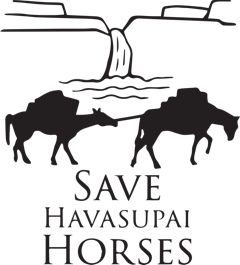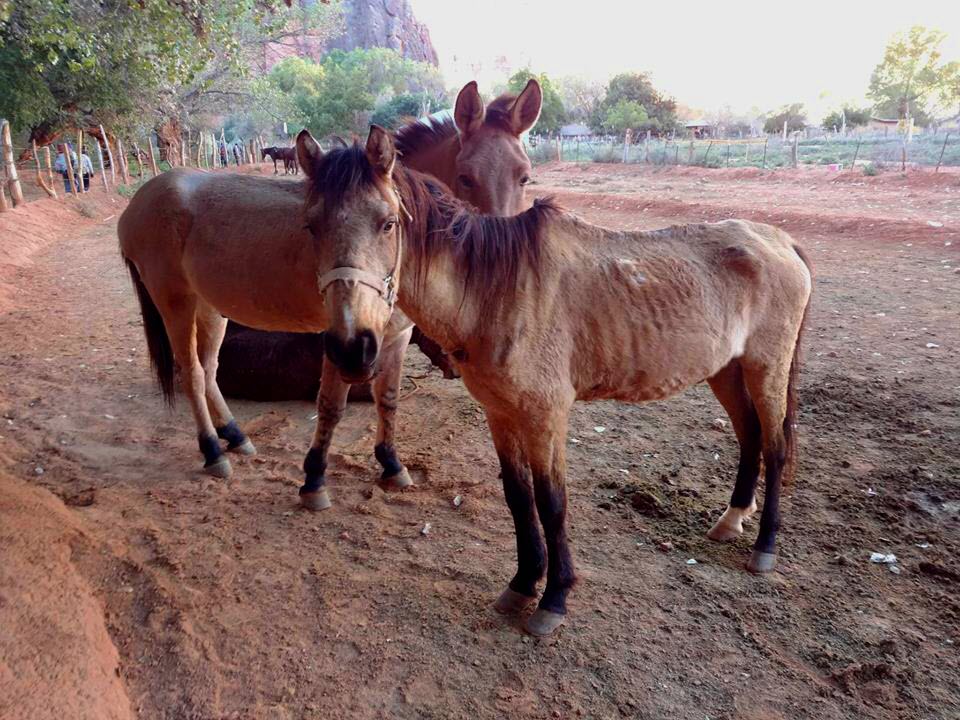Frequently Asked Questions
For anyone who is new to SAVE's campaign or who wishes to support the cause, you may have several questions about our group, why we exist, what we do, etc. We want you to be well informed.
Start with these FAQs, and if you still have questions, please contact us!
What is SAVE?
Stop Animal ViolencE (SAVE) is a group of volunteers advocating for the welfare of the pack horses and mules in the Havasupai region of the Grand Canyon. In February of 2016, they came together out of compassion to help improve the lives of these animals by calling for the cessation of violence against them, and the adoption of a standard of care for them. Not a 501(c)(3), SAVE hopes to be a temporary organization that will dissolve when the conditions for the animals consistently improve.
The Havasupai reservation is a sovereign nation, so what can be done about the abuse?
The pack horses and mules are located on tribal land. While it is primarily up to the tribal council to create and enforce standards for the animals, as well as to hold offenders accountable, that is simply not happening. Enforcement then becomes a federal issue for the Bureau of Indian Affairs (BIA), who have jurisdiction in Supai. In April 2016, SAVE was instrumental in aiding in the first animal cruelty arrest and prosecution on tribal land. There have been no prosecutions related to animal cruelty since then. Tourists need to keep sending reports of abuse they witness to the BIA contacts.
Why is the neglect and abuse still happening to some of the pack animals?
Testimony of cruelty toward the pack animals on the Havasupai reservation has been documented for 50 years. Myriad factors have contributed to this history of chronic abuse:
Failure of the Havasupai tribal council to address the abuse with enforced standards of care and prosecution of the abusers
Obstruction from the tribal council and denial of third-party assistance in the form of vet/farrier care, equipment and food donations, and education
Limited jurisdiction of the Bureau of Indian Affairs (BIA), who must follow certain protocol to even build a case for animal cruelty that can be considered for federal prosecution
The isolated location of Supai, which has kept this "secret" largely out of view for public scrutiny, which in turn has led to a general lack of awareness with tourists, the media, other advocacy groups, and beyond
The misconception that it is normal or expected for "working animals" to appear in degraded conditions
Tourists who do not want the mistreatment of the pack animals to detract from their vacation experience
Lack of enough public pressure on the tribe, outfitters and federal agents to intervene
Complicit behavior on the part of the outfitters who contract pack animals
Complicit behavior (from ignorance or apathy) on the part of tourists who use pack animal service
Misinformation and untruths told by outfitters to assure tourists that they do not use abused animals
Substance abuse by certain packers that leads to violent behavior against their animals
Has SAVE attempted to work with the Havasupai Tribal Council directly to resolve this?
Many individuals have - some many times, and some for months and years prior to joining this group. We have not yet had a response from the Council to our requests for a conversation on this issue. Read SAVE's Open Letter to the Tribal Council (March 2016).
What are SAVE's primary goals?
The provision of sufficient food, water, shelter/shade, and rest for the pack animals in the village and at Hualapai Hilltop.
The cessation of beating, striking, kicking, shooting, starving and torture of pack animals.
The implementation and strict enforcement of this recommended minimum standard of care, or to a similar standard of care that is formulated by equine veterinarians who are not connected to the Tribe.
The accountability and prosecution of offenders, including outfitters, who continue to be complicit in the neglect, cruelty and abuse by using these animals as part of their business operations.
What has SAVE accomplished so far?
We have helped rescue five badly abused and "tortured" (the word used by Lt. Randy Servis, Arizona Department of Agriculture) horses resulting in the first animal cruelty arrest and prosecution on tribal land.
We have successfully led a public awareness campaign in the media, leading to countless news stories and ultimately educating thousands of people on the pack animal abuse in Supai.
We have amassed and documented many eyewitness accounts of animal abuse and have a process for reporting the abuse to the federal government. See our comprehensive report.
We have aided in exposing many outfitters using - or being complicit in using - abused animals. Some, like REI, who have responded by no longer offering trips there altogether.
We launched an online petition in April 2016 to help raise awareness.
Can I make a donation for the animals?
At this time there is no known way to ensure that donations from the public would directly benefit the pack animals at Supai. Instead, we encourage you to support Healing Hearts Animal Rescue and Refuge in Arizona. Healing Hearts has rehabilitated former abused Havasupai pack animals that were either seized or relinquished thanks to efforts coordinated by SAVE.
Is SAVE trying to "shut down" the Havasupai region of the Grand Canyon?
No. Our hope is that by improving the lives of animals, the peaceful, non-violent people living there will flourish. We know that some tribal members there quietly support our efforts. Perhaps they, too, are weary of living in fear of the same violent people who neglect, abuse and torture animals. People who treat defenseless animals that way are typically not kind to humans either. There are some wonderful people and responsible packers in this area of the canyon. We hope that this effort will eliminate the violent criminals and ultimately make life, and the economy, better for those who use responsible and peaceful business practices.
Where can I find SAVE on social media?
Please follow us on Facebook, Instagram, Twitter, YouTube and Tik Tok.

